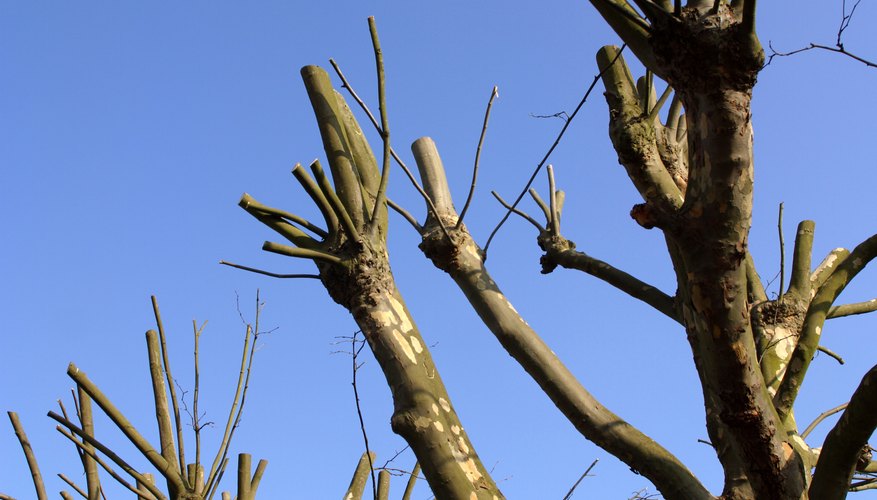When you pollard a tree, you prune it to its main stem and perhaps a few shortened branches. It's a technique commonly used wherever trees lack the room to grow full-sized. It encourages vigorous, leafy growth near the trunk of the tree. You can easily pollard your own trees by following the steps below.
- When you pollard a tree, you prune it to its main stem and perhaps a few shortened branches.
- It's a technique commonly used wherever trees lack the room to grow full-sized.
Choose trees to be pollarded. There are many varieties that take well to this process. Likely candidates include Striped Maple, Acer pensylvanicum; Catalpa, Catalpa spp.; Black locust, Robinia pseudoacacia; Willow, Salix spp. and Horsechestnut, Aesculus hippocastanum.
When growing a tree intended for pollarding, cut back the central leader (top upright of the main trunk) to the level of the lateral branches. Remove branches that cross other branches and remove lower shoots from the trunk of the tree. Allow the trunk of the tree to grow about 1.8 m (6 feet) tall.
- When growing a tree intended for pollarding, cut back the central leader (top upright of the main trunk) to the level of the lateral branches.
- Remove branches that cross other branches and remove lower shoots from the trunk of the tree.
Begin in late autumn or early spring. This is true for most of the species that can be pollarded. Acer varieties should be pollarded in summer, but not in extra-dry conditions.
Prune the tree. Cut back all or most of the branches to 2.5 to 5 cm (1 to 2 inches) from the main stem. This will cause a many closely spaced shoots to appear from the top of the tree. Immediately cut off any shoot growing out farther down on the trunk.
Pollard every 1 or 2 years. The new stems should be cut back every year, or every other year, to encourage new growth. Waiting any longer could damage the tree. Cut the new growth back close to the main trunk without cutting into it.
TIP
Pollarding keeps power lines, roof gutters and streetlights from being obstructed by full-sized trees. Pollarding also prevents trees from developing long, heavy branches that could fall into the roof of your house or cause other damage. Start pollarding while the tree is young. This prevents decay of the cut branches. As the tree matures, continue annual pollarding above the level of the preceding cuts, so that fresh cuts are not made into older wood. If you allow any of the main branches to remain, they should be well spaced and pruned to no more than 1.8 m (6 feet). Cut off other lateral shoots as soon as they appear.
